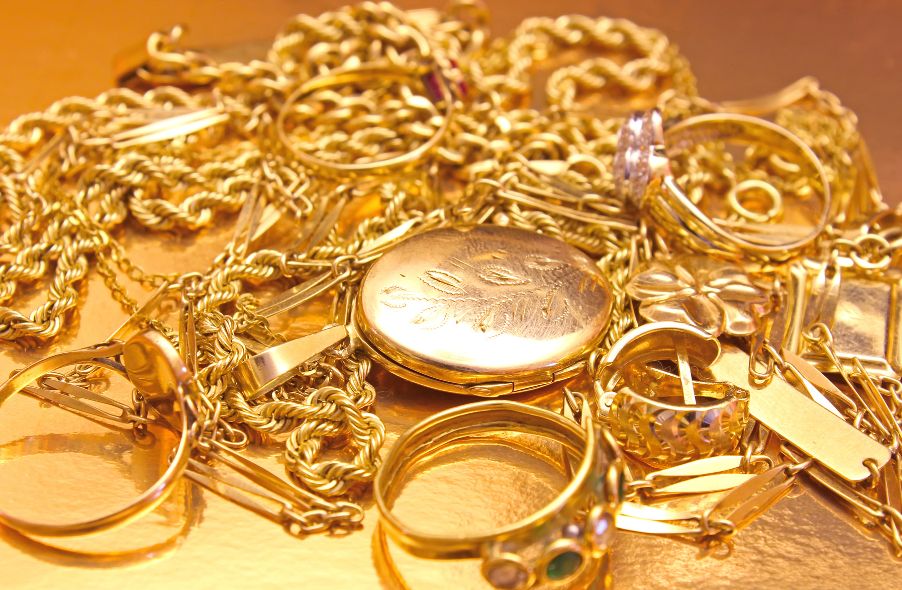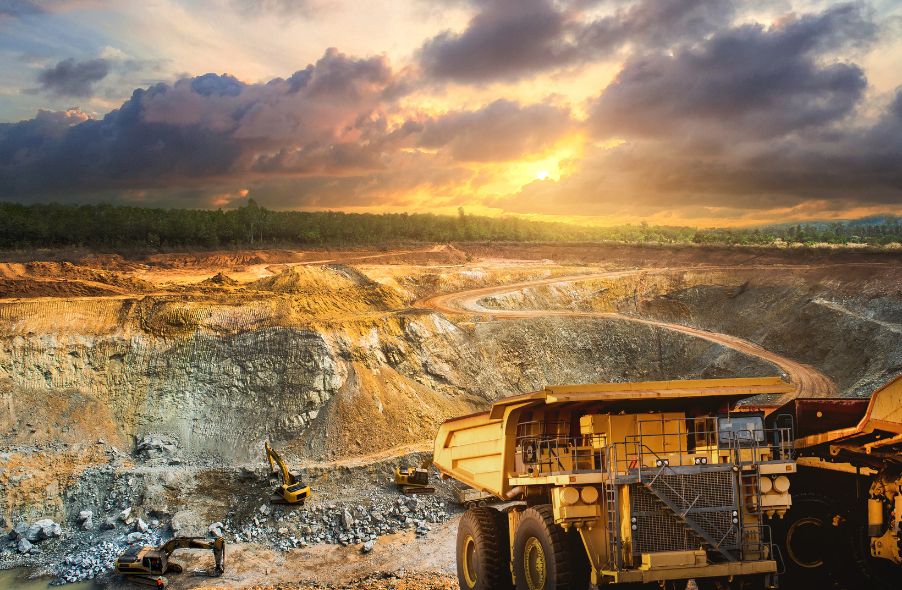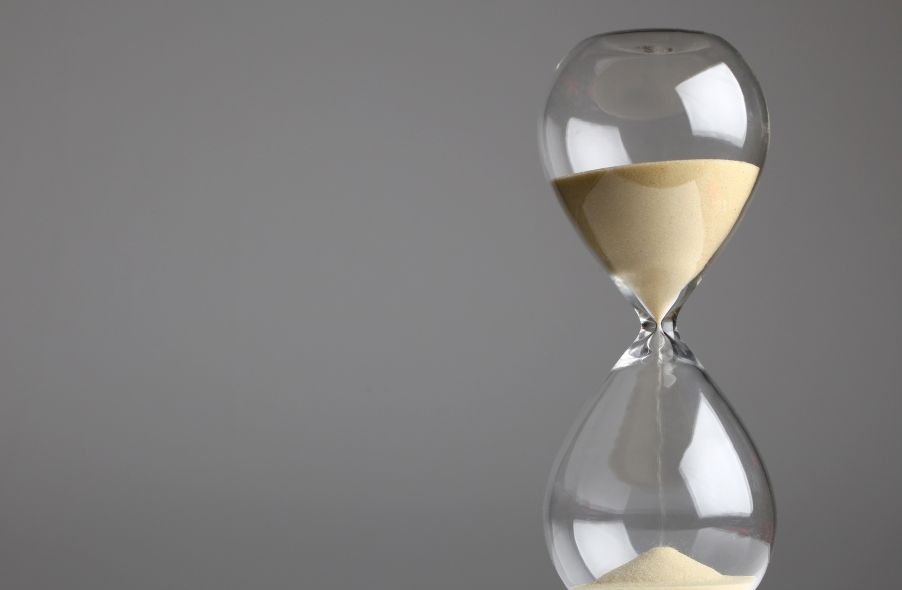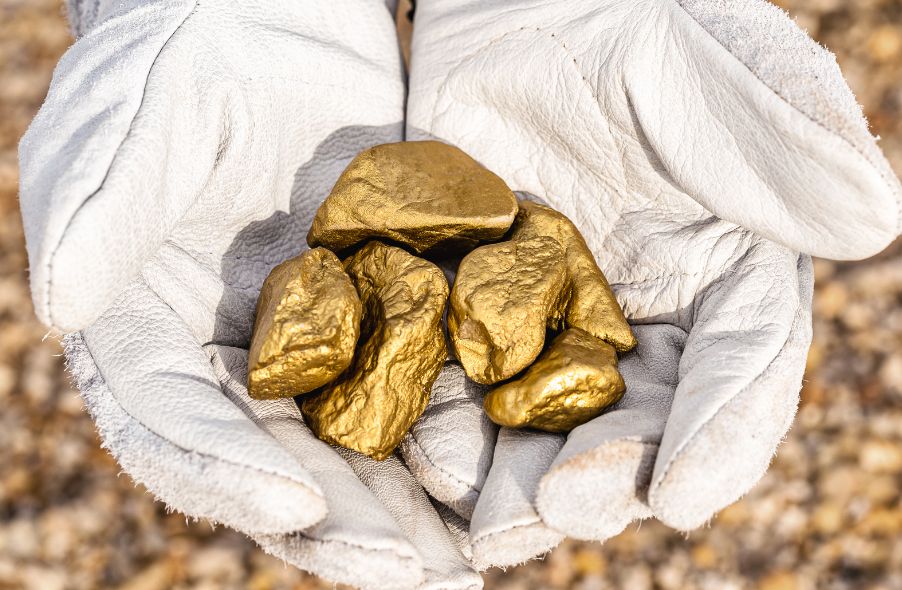Like most valuable commodities, gold has a finite supply. In fact, it’s one of the rarest elements on Earth. It is also malleable, long-lasting, and doesn’t corrode, making it prized for its usefulness and beauty as well as its scarcity. Since we can’t produce gold in a lab or a factory, humans have only two choices: buy already-mined gold or mine the limited quantities that remain.
This means that investors, collectors, and entrepreneurs all share the same question: how much gold is in the world? Or more precisely, how much accessible gold is in the world? While new technologies may one day enable us to reach currently inaccessible (or even undetectable) deposits of gold, we don’t know when that day will come.
In the meantime, let’s look into how much gold has already been mined, how much gold might remain, and where it is in the world.
How Much Gold Has Been Mined?
We can probably never know exactly how much gold people have mined since the beginning of civilization. According to the World Gold Council, the best estimates place that number at 230,244 tons, with two-thirds of that amount coming since 1950.
Because gold is nearly indestructible, most of it still exists on the planet in one form or another. If you gathered together every single ounce of gold ever mined, you would have a cube that measures only about 73 feet on each side.
Where Is the Gold?

Despite being relatively scarce, gold is all around us. But how much gold is in the world—and where is it? Besides sitting unmined in deposits around the world, gold also exists above ground in modern products.
Jewelry
One of the earliest uses of gold was to fashion decorative objects. Thanks to the metal’s relative flexibility and low melting point, even primitive tools could shape gold fairly easily. Just like ancient cultures thousands of years before them, modern societies continue to prize gold jewelry for its beauty and luxury in the form of necklaces, bracelets, and other jewelry.
Medicine
Gold has several uses in medicine, including dental implants, other medical devices, and gold-based pharmaceuticals that treat rheumatological conditions like arthritis.
Aerospace
Due to gold’s anti-corrosive properties and its ability to reflect infrared radiation, the aerospace industry uses gold coatings in satellites and telescopes.
Nanotechnology
Nanotechnology involves using tiny particles to create new materials, structures, and devices. Gold nanoparticles play an important role in several industry applications, including electronic touch screens and biomedical diagnostic equipment.
Current Major Sources of Gold

The gold industry has become increasingly geographically diverse over time, with gold mining operations now existing on every continent except Antarctica.
China is the largest producer in the world, accounting for about 10% of worldwide gold production. Behind China on the list are Russia, Australia, Canada, and the United States. The remaining gold producers in the top 10 are Ghana, Peru, Indonesia, Mexico, and Uzbekistan.
This diversity is in marked contrast to the situation even 40 years ago when the large majority of the world’s gold came from South Africa. The country is home to the Witwatersrand Basin, the largest single source of gold in history. In fact, some estimates suggest the formation accounts for 30-50% of the gold ever mined on Earth. First discovered in 1886, the Witwatersrand Basin has declined in gold production since the 1970s.
Major sources of gold in the world include the following mining operations:
- Nevada Gold Mines (USA)
- Grasberg minerals district (Indonesia)
- Olimpiada gold mine (Russia)
- Boddington gold and copper mine (Australia)
- Muruntau gold deposit (Uzbekistan)
- Kibali gold mine (Democratic Republic of Congo)
How Much Gold Is Left in the World?
According to the World Gold Council, the total amount of above-ground gold stocks includes the following estimates:
- Jewelry: 105,322 tons (46%)
- Bars and coins: 51,276 tons (22%)
- Central banks: 39,369 tons (17%)
- Other: 34,278 tons (15%)
- Proven reserves: 57,320 tons
However, more gold may exist than these figures reflect, since estimating the global stock of gold is tricky. It’s one thing to calculate central banks’ gold, but another thing entirely to know how much gold is in the world. For starters, illegal or “artisanal” mining operations in remote locations don’t report their numbers to official bodies. In addition, gold mined centuries or even millennia ago may not have made its way into the official counts.
In other cases, countries may inaccurately report or intentionally misrepresent the amount of gold they produce. For example, China does not export gold and is typically not open with mining figures, making it difficult to have full transparency. Other countries may not report gold in tombs (as in Egypt) or in private vaults.
Unless an organization goes into every home in the world, looking in jewelry boxes and personal safes, any calculation of the global total is an estimate.
Which Country Has the Most Gold?

The globe does not have anywhere close to an equal distribution of gold, with some nations possessing significantly more than others. The following five countries hold the largest reserves of gold in the world:
United States
The United States has the largest gold stockpile by far. In fact, the U.S. government holds 8,133.5 tons of gold — nearly as much as the next three countries combined. The U.S. keeps its gold in the United States Bullion Depository at Fort Knox, Kentucky.
Germany
Germany has 3,359.1 tons of gold in its reserve. The European leader in gold holds its stockpile in multiple locations, including the Deutsche Bundesbank in Frankfurt am Main, the U.S. Federal Reserve Bank in New York, and the Bank of England in London.
Italy
Next on the list is Italy, with 2,451.8 tons. The European debt crisis in 2009 caused some to call on Italy’s government to sell a portion of its gold holdings to raise funds, but that did not happen.
France
France has gold reserves of 2,436.5 tons, a number that hasn’t changed since 2009, the last time the nation sold any gold. The Banque de France stores the gold in an ultra-secure underground vault known as the Souterraine.
Russia
Rounding out the top five gold-holding countries in the world is Russia. In 2018, Russia replaced China in the fifth spot with 2,301.6 tons. (China’s supply is estimated at 2,147 tons.) To increase its gold reserves, Russia sold U.S. Treasury bonds to raise funds.
When Will the Gold Run Out?

Now to the big question: when will the world run out of gold? Discoveries of untapped deposits are increasingly rare, leaving most gold production coming from older mines.
While there is no way to know exactly how much is left, the U.S. Geological Survey estimates that underground gold reserves amount to 55,115 tons. This means that roughly 20% of the planet’s total of the precious metal remains.
Gold reserves refer to deposits that are currently economically feasible to mine. These are different from gold resources, which could become economically feasible at some point in the future. While discoveries of new deposits, new mining technologies, and new needs for gold may change the timeframe, some experts estimate that we may run out of the precious metal in 20 to 40 years.
What Is Recycled Gold?
Since gold basically lasts forever, recycling offers promise for extending the available supply. In fact, recycling gold is quite a bit easier than mining new gold. Even if gold mines stop producing, the existing above-ground supply of the metal will keep circulating.
Recyclers can take gold in all sorts of forms — including coins, wedding rings, dental crowns, and even television parts — and melt it down to use in other applications.
When recycling gold from jewelry or coins, recyclers evaluate the gold’s purity using a special device and sort it by quality. Then, they melt the precious metal in a crucible at an extremely high temperature and pour it into a bar shape. The gold may undergo several more phases of refinement.
Unfortunately, however, some uses of gold make it more difficult to recycle. For example, the technology industry often uses the metal in such tiny quantities that it is too impractical (and expensive) to extract. In addition to removing the gold from its metal or plastic housing, recyclers must pass it through a chemical stripping procedure and further purification before they can use it again.
For that reason, most of the gold in these devices ends up in landfills. However, increasing awareness and new technological solutions hold some promise here too, as pioneering efforts to recycle gold from electronic scrap piles have already begun.
Does Gold Get More Expensive as Supplies Run Low?
Although recycling can extend the supply of how much gold is in the world economy, there is no denying that the global stock of unmined gold is decreasing. Some experts believe that humans may already have discovered all of the globe’s major gold deposits, meaning that each amount mined drops the planet’s remaining total.
As above-ground demand for gold grows alongside an awareness of declining supplies, the price will likely rise.
It’s difficult to predict exactly how much gold prices will surge in the face of depleted deposits. Furthermore, other factors affect gold prices, including geopolitical conflicts, inflation and deflation, environmental regulations, changes in gold reserves, and currency exchange.
Because the precious metal is bound by the laws of supply and demand, however, prices will almost certainly go up as the available supply of how much gold is in the world goes down.
Environmental Impact of Gold Mining
Several industries use gold in initiatives that may help the environment, such as solar cells, clean-energy fuel cells, and groundwater decontamination. On the other hand, gold mining poses a huge environmental hazard when not conducted responsibly:
- Cyanide heap leaching: An affordable but dirty way to extract gold, this method pollutes groundwater, surface water, and soils with the dangerous chemical cyanide.
- Open-pit mining: This mining technique causes profound changes to vegetation, soil, and bedrock, which destroys landscapes and harms ecosystems.
- Toxic waste dumping: Many gold mines release toxic waste directly into bodies of water like lakes, rivers, and oceans, which can harm wildlife and humans alike.
As concerns about the environmental costs of gold mining rise, countries have begun implementing tighter controls and stricter regulations. Sustainable operations like placer mining may become more attractive thanks to their small-scale and less invasive nature. Smart mining technologies may also improve resource management, including reducing waste and optimizing water and energy usage.
Gold Mining: Opportunities and Prospects

Cutting-edge technologies may enable mining operations to get better and more efficient at what they do. At the same time, scientists and entrepreneurs are on the lookout for new places to find the precious metal.
While Earth potentially holds some remaining unexplored gold deposits, many of those regions pose problems for mining operations. For example, its extreme weather conditions and remote location make Anartctica cost-inefficient for mining. West Africa has great underexplored potential but features unstable terrain, uncharted territories, and tightening regulations amidst a growing understanding of the hazards of mining.
For those reasons, prospective opportunities for future gold mining operations tend to focus on the following:
From the Sea Floor
Oceans contain gold, both dissolved in the water and undissolved on the sea floor.
According to Forbes, the world’s oceans contain about 20 million tons of gold in the water. While that sounds like a lot, the concentration is extremely low. In fact, the National Ocean Service reports that oceans in the Atlantic and North Pacific contain only about one gram of gold for every 100 million metric tons of water.
What do all of these numbers mean? It is extremely difficult and expensive to extract gold from seawater. Current technologies do not allow companies to make a profit by doing so.
The ocean floors also pose challenges, but explorations of potential solutions are underway. Most deposits in the seabed are located a mile or two beneath the surface and also encased in rock, making it a cost-ineffective way to mine. Until now, most marine mining efforts have taken place in shallow coastal waters, where resources like sand, tin, and diamonds are more readily accessible.
Most proposed deep-sea mining sites, however, are near polymetallic nodules or hydrothermal vents at 4,600 to 12,100 feet in depth. The vents create massive sulfide deposits on the seafloor that contain valuable metals, including gold. While no commercial deep-sea mining enterprises are currently in operation, the International Seabed Authority has begun granting exploration licenses.
At Lower Densities
All precious metals have a grade depending on the proportion of metal in the ore. When gold ore at a mining site has a high grade, that means its ore has a high density of gold. These mines have a reputation for being of higher quality. The reverse is also true: mines with lower-grade ore are considered lower quality due to their lower density of gold.
Grams per ton (g/t) is the most common metric to indicate gold density. High-quality mines have densities of 8.0 to 10.0 g/t, while lower-grade mines have densities of 1.0 to 4.0 g/t. Numerous countries are home to high-grade mines, including the United States, Russia, Peru, Canada, and Indonesia.
Generally, the most profitable mines have high-grade ore. However, lower-quality mines can also turn a profit if it takes less effort to extract the gold. For example, thanks to lower operating costs, open-pit mines are valuable despite typically containing a lower-grade ore.
Using new technologies to capitalize on lower-density operations might provide opportunities for future growth in gold mining. Another potential source is investment in in junior mining companies — miners that produce less than 1 million ounces a year,
In Space
As the reputed original source of all the gold on Earth, outer space is a potential new source of gold. Scientists believe that gold first came about when neutron stars collided with each other before the solar system was formed. Terrestrial deposits of gold, such as South Africa’s Witwatersrand Basin, are most likely the result of ancient meteorites crashing into Earth.
While mining gold in outer space may prove exorbitantly expensive, that’s not stopping people from trying. Upstart space mining companies are now eyeing potential sources of gold on other planets, moons, and celestial bodies like asteroids. That’s because the potential payoffs are huge: the asteroid belt may hold over $700 billion in mineral wealth.
The possibilities of space mining are so great, in fact, that some proposals are now calling on governments to protect pristine planets from an imminent interplanetary gold rush.
The Future of Gold

The next few decades will likely see substantial changes in the gold industry, including some that we can’t currently predict. Beyond the typical reasons for fluctuating gold prices — including dwindling supplies, geopolitical tensions, and economic pressures, the World Gold Council reports that the following factors will likely impact the future of gold:
- Environmental concerns, social issues, and government regulations will play an increasing role in altering mining production methods.
- The evolving need for gold in the modern energy, healthcare, and technology sectors may place increasing demands on dwindling supplies of the precious metal.
- Economic growth in countries like China and India will have a significant impact on gold demand.
- Mobile apps allowing individuals to buy and sell gold will develop rapidly in India and China, affecting the manner and frequency of gold investment and exchange.
- The gold mining industry will have to confront the challenge of maintaining gold production to match the volume it has historically delivered.
While the future of gold is currently unclear, many experts believe it still makes a solid investment. With high inflation and stubborn interest rates, many investors have continued to turn to gold. As demand rises, prices typically follow.
When Is the Right Time To Find a Gold IRA Partner?
With the price of gold on the upswing and new supplies on the apparent downswing, the time to find a gold IRA partner is now! Gold individual retirement accounts provide a way for you to invest in gold and diversify your retirement portfolio.
Gold typically has an inverse relationship to other asset classes, such as stocks and currency. This makes including the precious metal in your retirement savings a way to protect against inflation, stock market crashes, and other economic pressures that can cause your other assets to drop in value.
Now that you know how much gold is in the world, you may decide that it makes sense to invest in the precious metal. For more information about gold IRAs or to find a gold IRA partner, reach out to Learn About Gold today.





